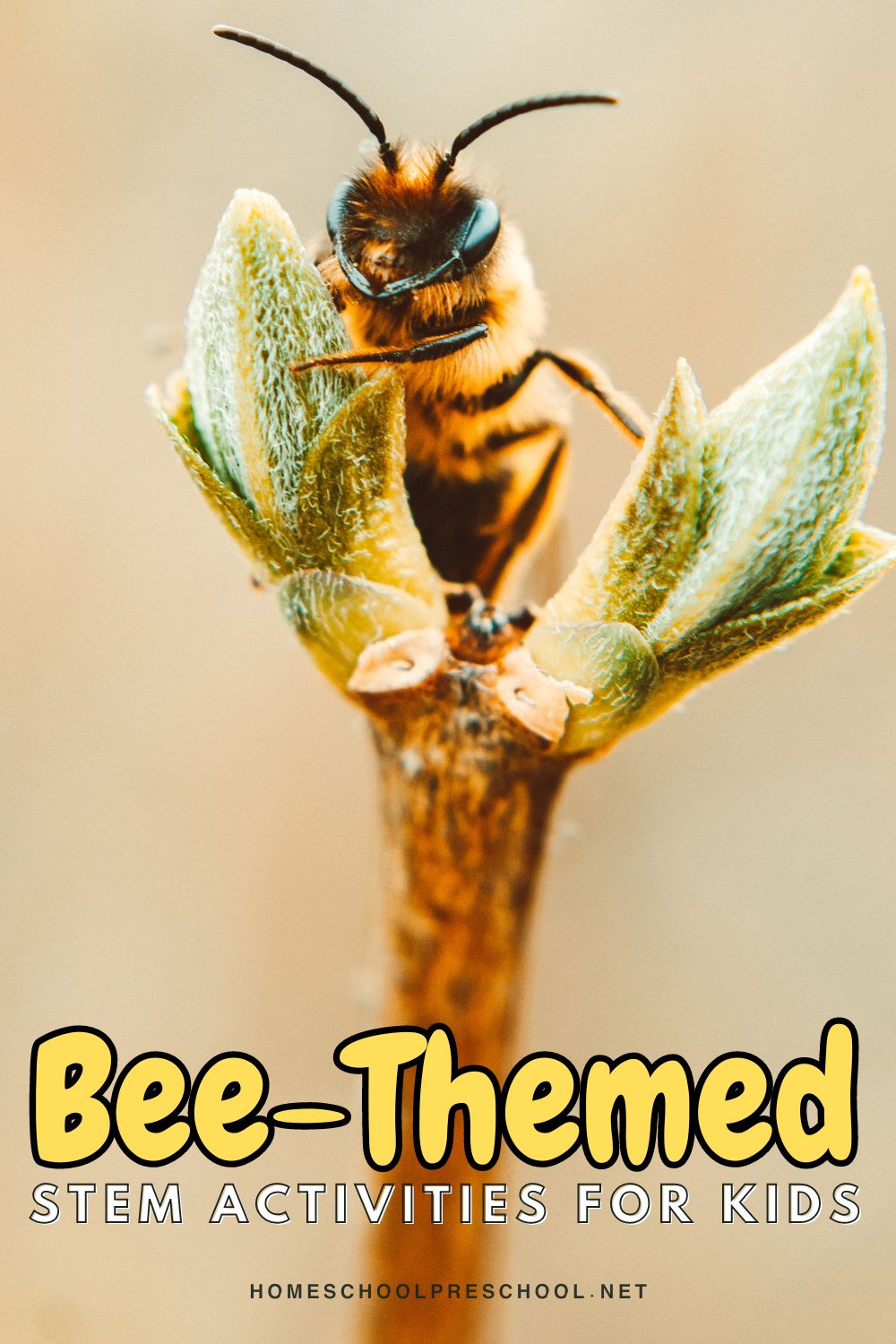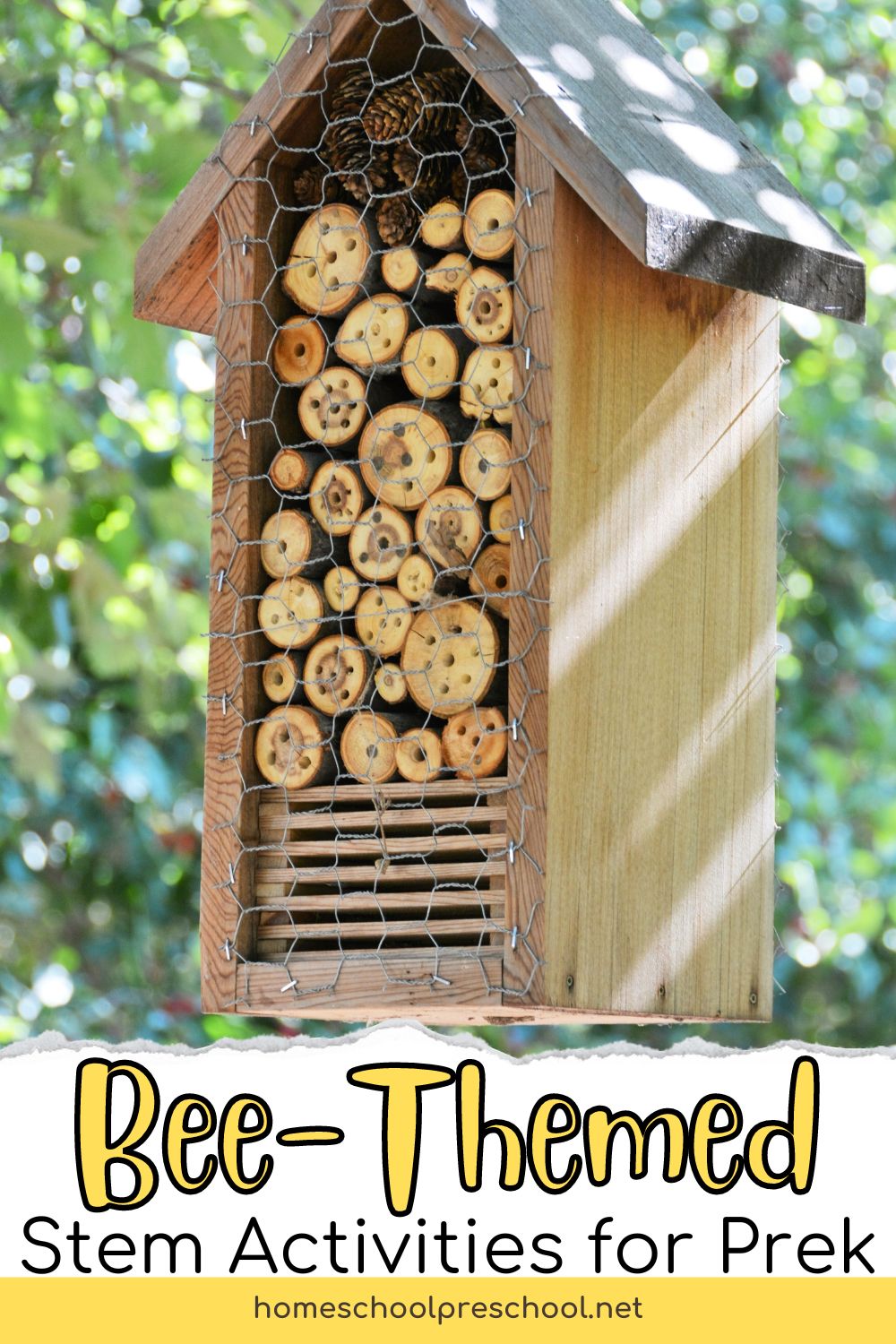Bee STEM Activities
Bee STEM activities are a fantastic way to introduce preschoolers to the wonders of nature and science! In our world, bees play a vital role as pollinators, helping plants and flowers grow.
Their intricate world offers many educational opportunities for our little learners. We are excited to share some hands-on bee activities for preschoolers that can spark curiosity, inspire exploration, and foster a love for STEM in young learners.
Preschoolers will love exploring bee anatomy with art! Sensory play helps them understand pollination in a fun way. These bee-themed activities spark curiosity and make learning a blast. They’re perfect for little learners eager to discover the world around them.
Let’s dive into the world of bees and embark on a journey of discovery!

In this blog post, we will explore five hands-on bee activities that can spark curiosity, inspire exploration, and foster a love for STEM in preschoolers. These activities align with preschoolers’ natural curiosity and provide a meaningful learning experience that introduces bee anatomy, pollination, engineering, basic coding concepts, and the viscosity of honey. Let’s dive into the world of bees and embark on a journey of discovery!
What is STEM education, and why is it important for preschoolers?
STEM stands for science, technology, engineering, and mathematics. It is a way of learning that encourages children to explore and discover the world around them. STEM activities are hands-on and engaging, and they help children develop important skills such as critical thinking, problem-solving, and creativity.
Bee STEM Activities
We’ve got a fun collection of bee-themed STEM activities that are perfect for preschoolers. These activities are super fun and hands-on, and they’ll teach kids all about bees, their bodies, how they pollinate flowers, and why they’re so important.
Plus, they’re totally aligned with STEM education standards and will help kids develop their critical thinking, problem-solving, and creativity skills.
Bee Anatomy
In this activity, children create a bee’s body using art materials such as construction paper, crayons, and markers. When they’ve finished creating their bee, have them label the different body parts of the bee, such as the head, thorax, abdomen, wings, and legs.
While the children build and label their bees, discuss the functions of these body parts, such as how the wings help the bee fly and how the stinger helps the bee defend itself.
Finally, encourage the children to share their creations with the group and explain the bee’s anatomy to each other.
Pollination Power!
In the “Pollination Power!” activity, children engage in a sensory experience by exploring a bin filled with flowers, pollen, and other natural materials. They can touch, smell, and observe the different items, immersing themselves in the wonders of nature.
As they explore, children can learn about pollination, discovering how bees and other pollinators transfer pollen from one flower to another, enabling the growth of new plants.
This activity not only stimulates children’s senses but also fosters their understanding of life’s interconnectedness and pollination’s vital role in sustaining ecosystems.
Beehive Engineering
In the Beehive Engineering activity, children are presented with various materials like blocks, straws, and cardboard tubes. They are challenged to use their creativity and imagination to design and construct a model of a beehive.
This activity aims to encourage children to explore engineering concepts, foster teamwork and collaboration, and promote hands-on learning by designing and building their own beehive models.
This activity allows children to engage in problem-solving and critical thinking as they work together to create a structure that mimics the unique characteristics of a real beehive.
By providing children with open-ended materials, the Beehive Engineering activity encourages them to think outside the box and develop innovative solutions to the challenges they encounter during the building process.
Bee-Bot Coding
Use a programmable robot such as a Bee-Bot to teach children basic coding concepts. Children can program the robot to move in different directions to simulate the movement of bees.
This activity helps children develop computational thinking skills such as sequencing, loops, and problem-solving. It also introduces them to the concept of programming in a fun and engaging way.
Children can work together to create their own programs and share their ideas with others.
Honey Viscosity Experiment
In the “Honey Viscosity Experiment,” children explore the concept of viscosity, which describes how liquids flow. They compare the rate at which honey, water, and other liquids flow into different containers.
By observing the different flow rates, children can understand viscosity in a hands-on and interactive way. This experiment is a fun and engaging way to introduce the concept of viscosity to children and helps them develop their scientific inquiry skills.
By conducting this experiment, children can learn about the properties of liquids and how different substances flow at different rates.
How can I incorporate these bee activities into my preschool lesson plans?
These bee activities can be easily incorporated into preschool lesson plans by aligning them with specific learning goals. For example, the “The Buzz on Bee Anatomy” activity can be used to teach children about body parts and their functions. In contrast, the “Pollination Power!” activity can be used to introduce the concept of pollination.
Nonfiction Books About Bees
Exploring the world of bees through literature can significantly enhance preschoolers’ understanding and appreciation of these vital creatures.
Engaging in nonfiction books allows children to discover fascinating facts about bees, from their roles in ecosystems to their behavior and anatomy.
These carefully selected readings are educational tools and gateways to further curiosity and exploration.

Incorporating bee-themed STEM activities into your preschool curriculums offers a unique and engaging way to introduce young learners to essential science, technology, engineering, and mathematics concepts.
Children can develop critical thinking, problem-solving, creativity, and a deeper understanding of nature’s interconnections through hands-on activities like Bee Anatomy, Pollination Power, Beehive Engineering, Bee-Bot Coding, and the Honey Viscosity Experiment.
By exploring the fascinating world of bees through these interactive activities and nonfiction literature, educators can nurture a sense of wonder and curiosity in their students, laying a solid foundation for lifelong learning and environmental stewardship.
Remember, every small discovery and lesson learned is a step towards raising informed, responsible, and innovative future leaders and citizens.









